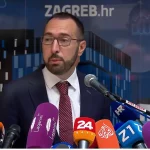Unless you’ve been living under a rock, you’ve likely heard that Croatian teachers are striking. While the reasons for that might seem obvious to some, there has been quite a considerable amount of misunderstanding as to exactly why this is taking place, or how it managed to reach the levels it has in the first place. Here are the most important questions about the Croatian teachers’ strike – answered.
As Jutarnji/Marijana Cvrtila writes on the 21st of November, 2019, the strike of Croatian education employees has been going on for a while now, and the Croatian Government’s obvious aversion to addressing numerous enormous issues that have been threatening this has been going on for a very long time.
Why did the education unions go on strike?
Due to the long-standing government neglect of the sector in which 68,000 Croatian primary and secondary school staff (and not only Croatian teachers) are seeing far smaller salaries than those employed in other types of public service take home every month.
More precisely, the coefficients of employees in education, according to union calculations, are about 6.11 percent lower than the coefficients of other public servants in the field of healthcare, social care, higher education, culture, etc., who work in jobs of a similar complexity of work.
What are education unions on strike seeking?
They are seeking an increase in the coefficients of all employees in the education system through the amendment of the coefficients regulation, which would increase their salaries by an average of 600 kuna gross, or 300 kuna net. Unions have so far indicated that they are ready to negotiate a payout dynamic, that is, they would accept the possibility of offsetting this coefficient over time, for example, to increase the coefficient by three percent immediately and another three percent early next year, or by some similar sort of model.
What is the Croatian Government offering as a solution to this issue?
The Croatian Government has been altering its offers to the unions so far, but none of them put on the table to date have aimed for a coefficient increase in the humble amount requested. In the conciliation process in early October, the government offered the unions the introduction of a special education allowance of four percent under the 2 + 2 model, the first part of which would be paid as early as October the 1st of this year and the second part (of two percent) from June the 1st next year.
When the unions refused that offer, Prime Minister Andrej Plenković announced a 6.12 percent increase in the base pay for all public and civil service employees from next year (education, healthcare, social care, culture, police, customs, government offices and ministries, etc.). and subsequently, educators were offered a two percent increase in their coefficients after the 30th of June next year if the government failed, in the meantime, to correct the regulation on coefficients in public services. With its latest offer, the government has turned that coefficient increase into a two percent increase since the same date, which was interpreted by the unions as an even worse offer, since such an increase would ultimately result in a smaller increase than the coefficient.
Why don’t school unions want to accept the government’s offer?
First of all, because for the growth of education employee coefficients of 6.11 percent, the state needs to allocate just over 400 million kuna annually, and the government has repeatedly insisted that they simply can’t provide this amount. At the same time, they’ve announced a 6.12 percent increase for around 240,000 public and civil servants from next year on, which will cost the state budget about 1.7 billion kuna in total.
In addition, the growth of the base pay for education employees is not the same as the growth of coefficients because it doesn’t eliminate the wage gap currently seen between education staff and those employed in other public services, it actually only deepens it.
How much does a working day for employees in education cost the state, or how much does the state actually lose if ”strike days” are paid and the teachers aren’t working?
According to the Ministry of Science and Education, the total gross daily cost for education employees costs the state about 30 million kuna, so that’s the amount that is “lost” if all 68,000 education employees are on strike and have been paid during that strike. Croatian teachers’ daily wages are on average 315 kuna.
Until when can the strike last?
The unions say that the strike will continue until the requirement for coefficient growth of 6.11 percent is properly fulfilled. As things currently stand, every school has been without teaching for over a week now, and the Ministry of Education proposes to compensate for this on Saturdays, by shortening the holidays or even by extending the school year.
It seems that each school will have to decide what they’re going to do to balance things out on their own, and in some areas they have announced that this decision should be taken at the level of counties and cities, taking into account the staff members and how much time they spent on strike.
Make sure to follow our dedicated politics page for much more.











